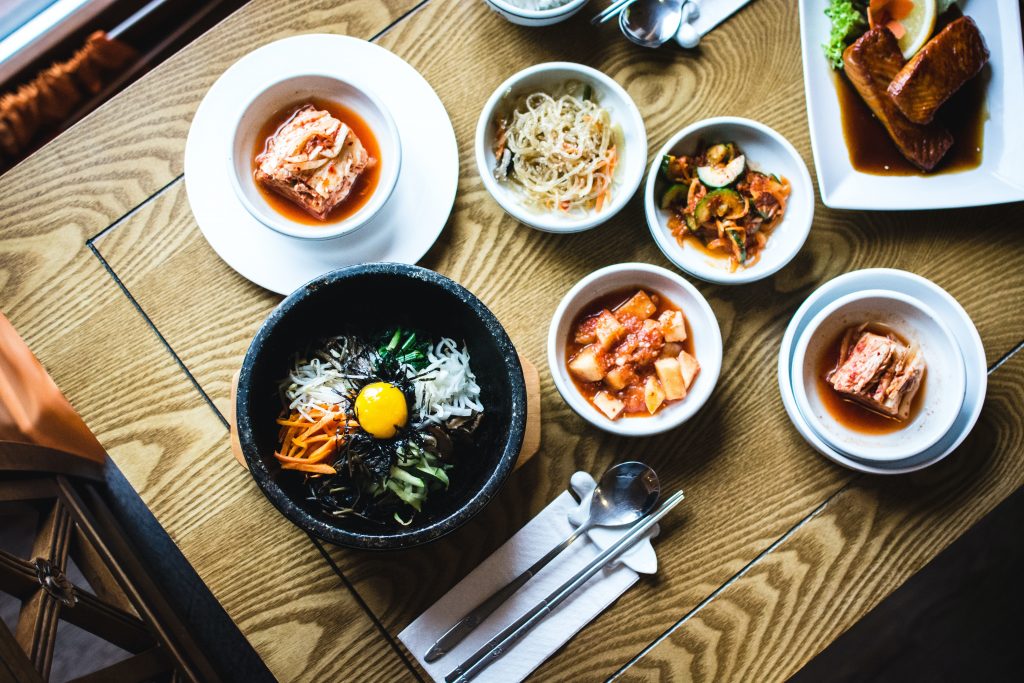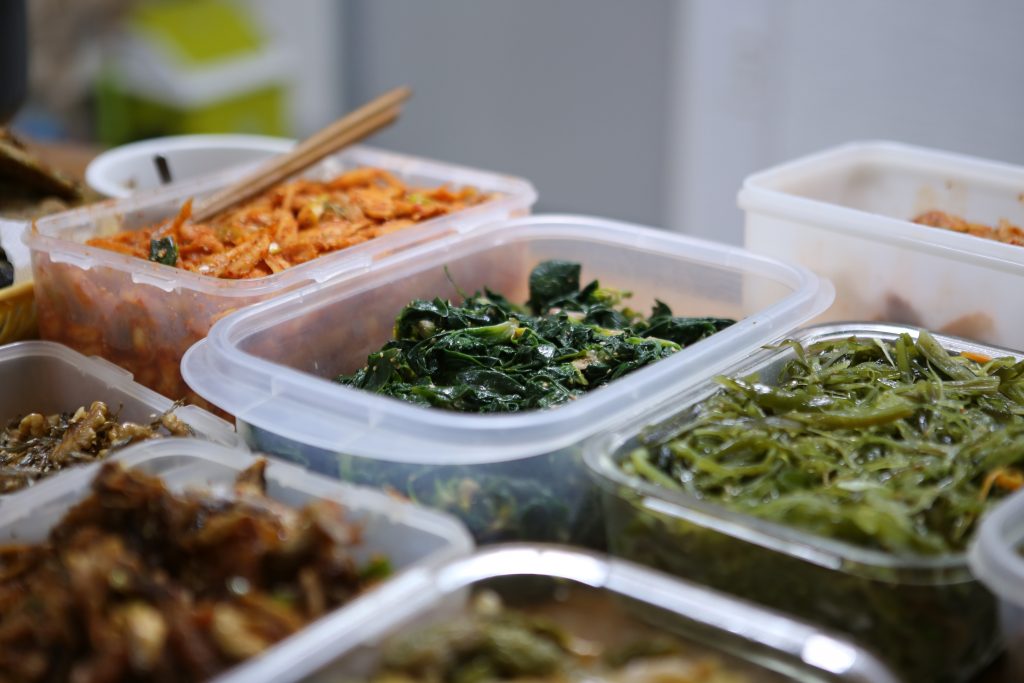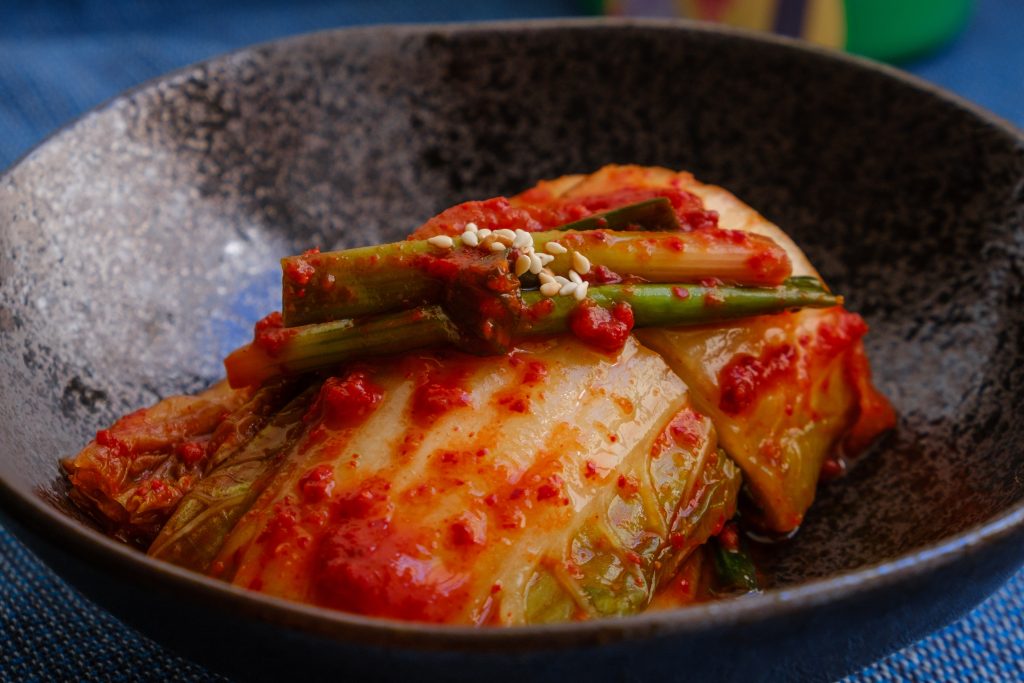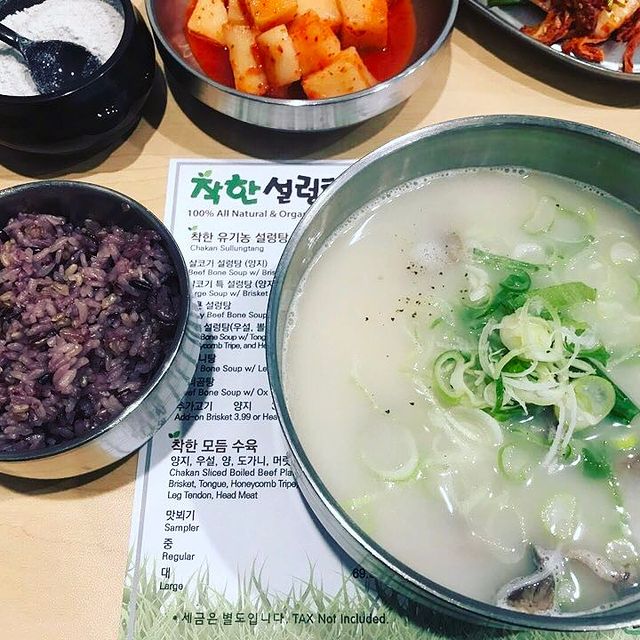- Home
- Explore
arrow_drop_down
- News & Articles
arrow_drop_down
- More
arrow_drop_down
- Contact Us (연락)
- @KoreatownOnline
What is Korean Food?
- FAQs
-
Aug 16
-
Andrew Kang
- Share post

Table of Contents
Korea, located in Northeast Asia, has an agricultural history that has continued to exist for more than 5,000 years despite its close proximity to China. For centuries, Koreans have eaten the products of the sea, the field, and the mountains because of the features of the Korean peninsula. The particular climate of the Korean peninsula makes Korean food more abundant and varied. Three parts of the Korean peninsula (east, west, and south) are surrounded by the sea. The climate is bitterly cold in winter, and very hot and humid in summer.

Definition of K-Diet and K-Food
K-diet and K-food are two different concepts. The concept of K-diet is used to represent the traditional Korean food culture, cooking methods, dietary habits and patterns, whereas K-food are the food constituents of K-diet. K-food and K-diet are often described as Korean cuisine, Korean diet, or as traditional Korean food.

Development of Korean Preservation Techniques
The development of Preservation Technology in Korea was prompted by the desire to preserve food resources. For example, in China, frying and pickling were the prevalent methods for reducing water content and to protect against microbial spoilage of food. Whereas the limited production of cooking oils in Korea has led to the development of the fermentation process for food preservation, which utilizes effective microorganisms against microbial spoilage.
While milk was the main ingredient in fermented products, in countries with strong livestock industries such as cheese and yogurt, the main ingredients in Korean fermented foods were grains and vegetables. This was due to their settled lifestyle and focus on agriculture.
Korean food has developed from the necessity of preserving foods during the hot summer and long harsh winters in the Korean peninsula characterized by rocky ocean fronts on the east, south, and west, and by rugged mountains on the north. In this environment, salted beans, fish, and vegetables were preserved by fermentation process.
Historically, Koreans have made various jang (fermented soy products) including kanjang (soy sauce), doenjang (soybean paste) and gochujang (red pepper paste), and diverse types of kimchi (fermented spicy cabbage ) with other vegetables. These unique fermentation techniques are examples of authentic Korean food.
Some Key Elements of K-Diet
- Recipes based on rice and grains
- Fermented foods
- Vegetables from wild landscapes and the seas
- Legumes, fish and red meat
- Medicinal herbs such as garlic, green onion, red pepper, and ginger
- Sesame and Perilla oil
- Deep-fat fried cooking
- Meals based on seasonal produce
- Various local cuisines
- Home-cooked meals.

The Traditional Korean Meal
Korea’s traditional meal (bapsang) is generally made up of four constituents.
- The first one is bap(cooked rice), which provides calories and is the main source of energy.
- The kinds of bap(cooked rice) that are used in main dishes include steamed rice, boiled barley, and multigrain rice. As for kuk, doenjang kuk, miyok kuk and beef kuk are commonly eaten.
- Another important element is kuk(soup), which allows people to chew and swallow rice, in turn supporting the digestive system. Previously kuk was translated into soup, and is quite different from Western soup.
- As for kuk, doenjang kuk, miyokkuk and beef kuk are commonly eaten.
- Korean banchan(side dishes), makes up the third element and makes the food taste better to support digestion while replenishing the body with nutrition. Usually, banchan is made up with legumes, and fish.
- Kimchi is always used as a (side dish) as are other foods, including roasted meat, vegetables, and salad dressed with garlic and chili powder; vegetables served as cooked or fresh. Cooked legumes seasoned with sesame seeds/oil or perilla seeds/oil and fresh vegetables seasoned with vinegar are also served as a side dish.
The most basic seasoning used to make the food savory is kanjang (fermented soy sauce), doenjang (fermented soybean paste), vinegar, gochujang, and jeotkal (fermented fish sauce from anchovies, shrimp, etc).
Jeotkal can be eaten as a side dish itself and is more often used as a seasoning .
- The final item is jang (sauce) which stimulates peoples’ appetite. This sauce includes herbs such as garlic, green onions, red pepper, and onions
In Korea, people drink soongnyung (similar to tea made from left over scotched rice) to finish off a meal.
By using these four fundamental foods, Korean people have been developing their own unique meals (bapsang) by choosing one or more elements in each category.

